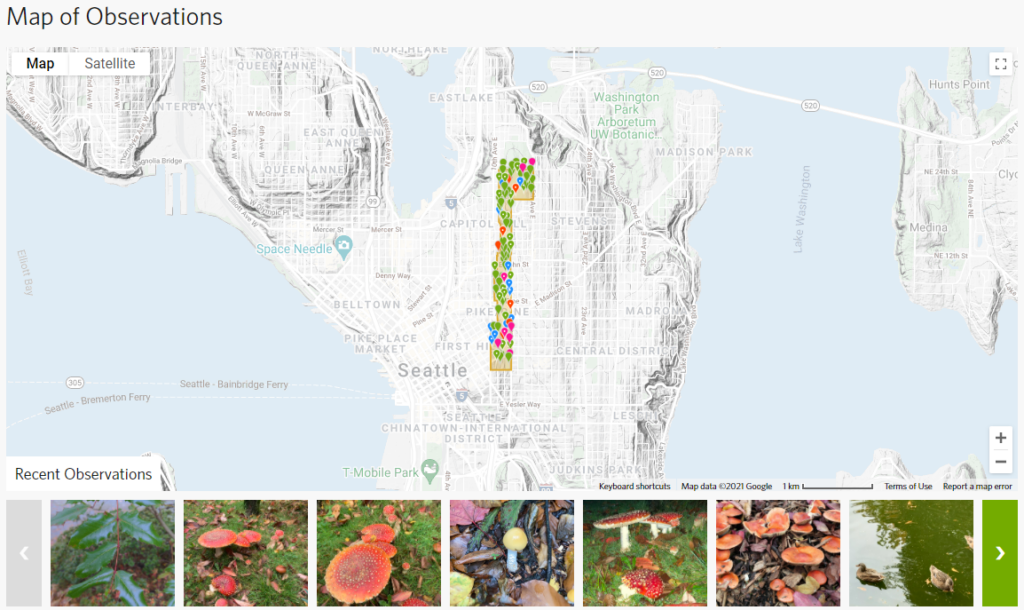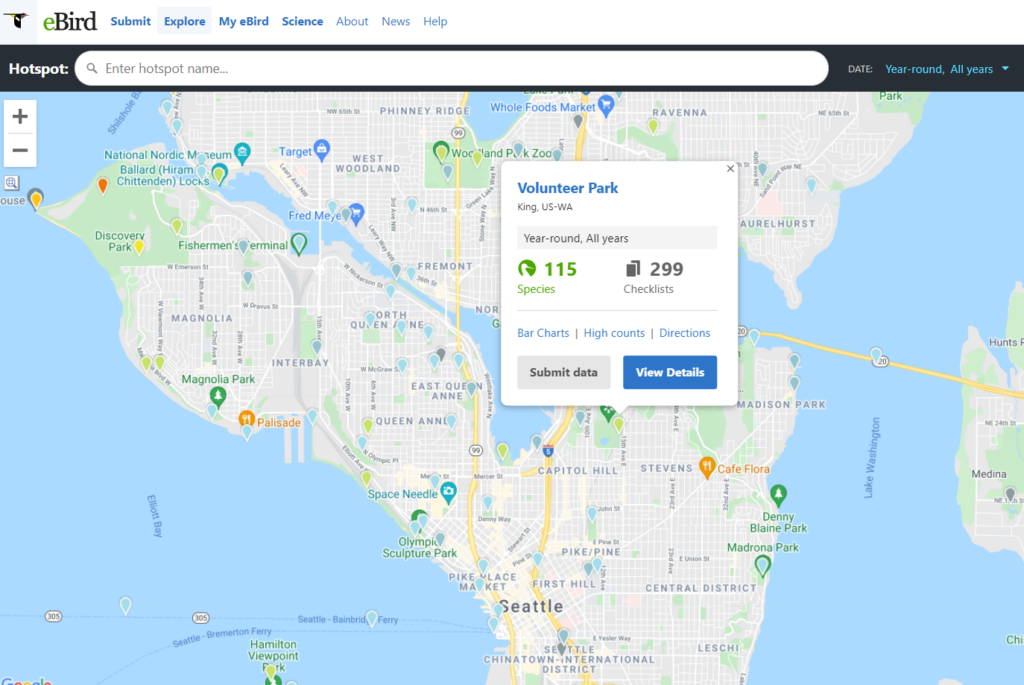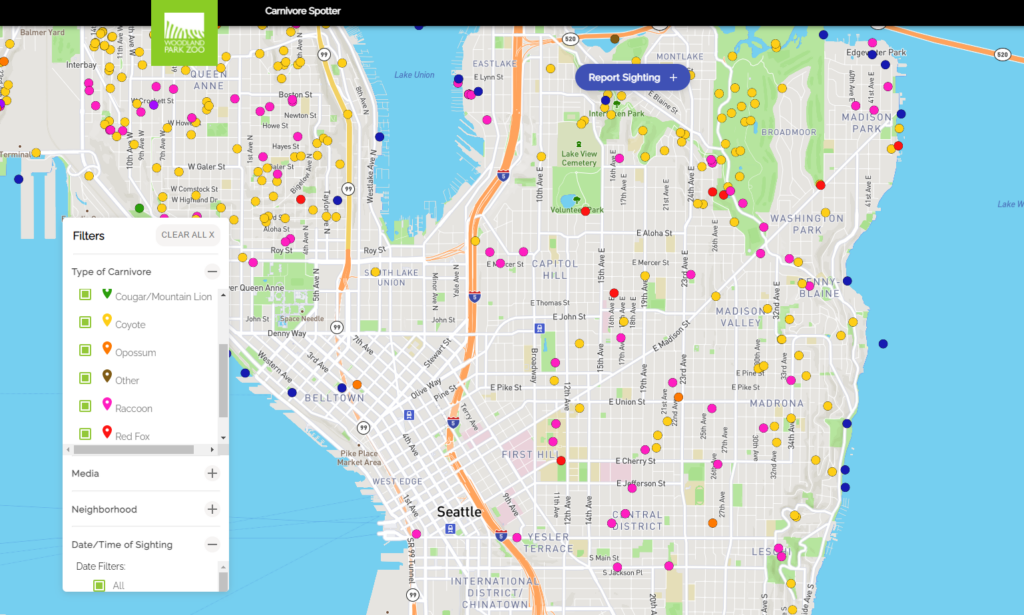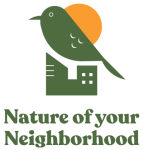Get involved by sharing and mapping the birds, animals and nature around you to help the community understand the biodiversity of our neighborhood.
iNaturalist

iNaturalist is an online platform for sharing and mapping observations of biodiversity around the world. Anyone can create an account and contribute observations that provide valuable information to scientists and conservationists. As of December 2021, 246 people have submitted 931 observations of nature, representing 348 species, in the Biodiversity Corridor.
Every year, Woodland Park Zoo helps organize the City Nature Challenge. The event occurs over four days in late April/early May. During that time, tens of thousands of people in hundreds of cities turn out to document urban biodiversity using iNaturalist. In 2021, more than 600 people in the Seattle-Tacoma area participated and found more than 1,000 species, including 121 in the Biodiversity Corridor. Learn more about iNaturalist.
eBird

eBird is an online platform for reporting observations of birds. Users submit “checklists” of bird species they see in particular locations. For example, as of December 2021, users have submitted 299 checklists, listing 115 bird species from Volunteer Park. Anyone can create an account and submit checklists of birds they see. Learn more about eBird.
Carnivore Spotter

Woodland Park Zoo and Seattle University run Carnivore Spotter to help researchers understand how mammalian carnivores live and interact with people across the urban and suburban areas in the Seattle region. You can help: next time you see a coyote, opossum, racoon, fox, bear, cougar, or otter, report it at CarnivoreSpotter.org.



